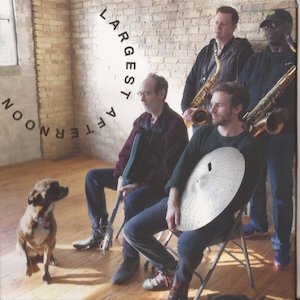Label: Blue Engine Records, 2020
Personnel - Reeds: Sherman Irby, Ted Nash, Victor Goines, Walter Blanding, Joe Temperley; Trumpets: Wynton Marsalis, Ryan Kisor, Marcus Printup, Kenny Rampton; Trombones: Vincent Gardner, Chris Crenshaw, Elliott Mason; Rhythm Section: Dan Nimmer (piano), Carlos Henriquez (bass), Ali Jackson (drums).
Trumpeter extraordinaire Wynton Marsalis fronts the Jazz At Lincoln Center Orchestra, a 15-piece band bound to perform saxophonist Sherman Irby’s Inferno, an impeccably arranged and masterfully executed suite in six movements that narrates Dante Alighieri’s first part of his 14th-century epic poem The Divine Comedy. The ensemble not only displays a magic touch when it comes to luxurious orchestration, but also provides absorbing individual statements whenever an improviser steps forward.
Featuring Joe Temperley on baritone saxophone, “Overture: Lost” was devised with sufficient sonic appeal to pike our curiosity, making a seamless transition to “Movement I: House of Unbelievers”. The zealous, epic tones of this first chapter distill into a romantic, swinging flow, where Ted Nash’s flute and Victor Goine’s clarinet dance together for a moment, before claiming, by turns, their individual space. Trombonist Vincent Gardner closes out the section reserved for spontaneous creativity, and the orchestral palette frees up attractive color tones.
Exquisitely nuanced, “Movement II: Insatiable Hunger” unfurls deliberately while the musicians dabble confidently in sophisticated atmospheres. This piece contemplates delicious counterpoint and contagiously sluggish motions.
If “Movement III: Beware the Wolf and Serpent” builds a lilting aural odyssey with the help of fantastic solos by Irby, trombonist Elliot Mason, and Marsalis, then “Movement IV - The City of Dis” lives in a world fusion realm. The rhythm, half-provocative and half-sinuous, gains further meaning when freewheeling folk interventions, affiliated to the East of the world, emerge on top of it. Woodwind player Walter Blanding does an excellent job here by doubling on soprano and oboe.
Collective discipline is an important aspect in Irby’s compositional aesthetic and the shapeshifting, cinematic narrations of “Movement V: The Three-Headed Serpent” show exactly that, conveying a sense of danger and momentum in one of its passages. However, unrehearsed creativity is also vital, and the spotlight is pointed at an early galloping drum solo delivered by Ali Jackson, followed by a buoyant tenor stretch over drums. On the last stretch of the path, direct dialogues occur between saxophones (Goines and Nash) and then trumpets (Kenny Rampton and Marcus Printup).
This deeply rewarding ride into a non-threatening hell is completed with “Movement VI: The Great Deceiver / Finale: The Shores of Mount Purgatory”. Here, an incipient bolero persuasion is slightly shaken by the low-pitched revolutions of pianist Dan Nimmer.
Grade A-
Favorite Tracks:
03 - Mov. II: Insatiable Hunger ► 05 - Mov. IV: The City of Dis ► 06 - Mov. V: The Three-Headed Serpent












































